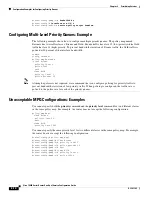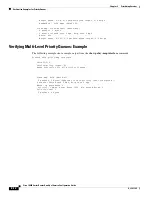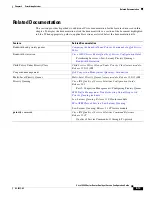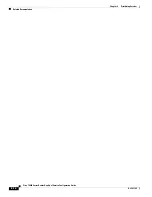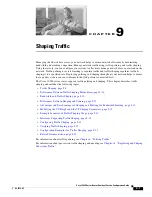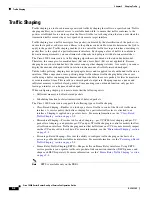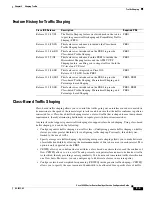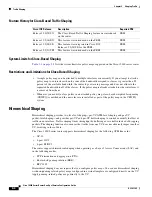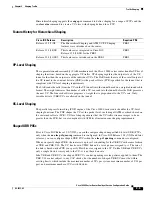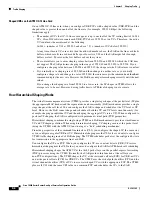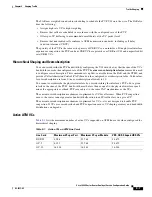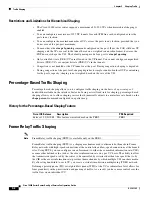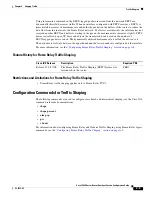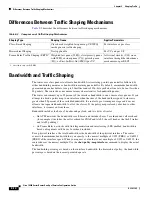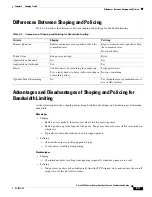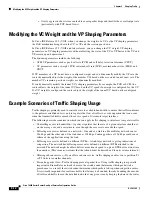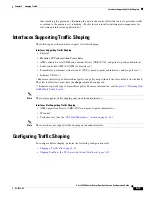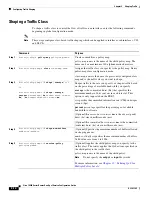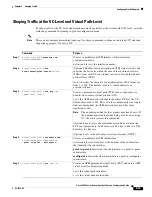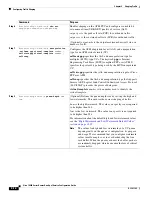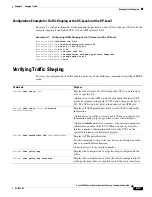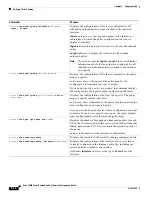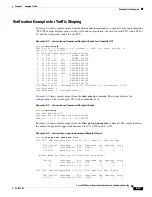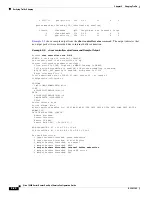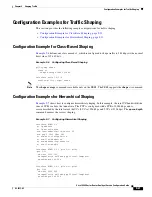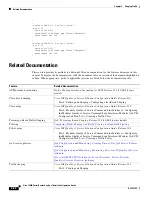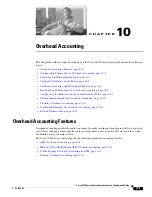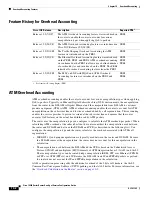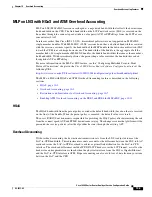
9-10
Cisco 10000 Series Router Quality of Service Configuration Guide
OL-7433-09
Chapter 9 Shaping Traffic
Differences Between Traffic Shaping Mechanisms
Differences Between Traffic Shaping Mechanisms
Table 9-2
describes the differences between traffic shaping mechanisms.
Bandwidth and Traffic Shaping
The router uses class queues to allocate bandwidth, first servicing priority queue traffic followed by
either bandwidth guarantee or bandwidth remaining queue traffic. By default, a minimum bandwidth
guaranteed queue has buffers for up to 50 milliseconds of 256-byte packets at line rate, but not less than
32 packets. The router does not ensure latency characteristics for bandwidth queues.
The router can commit up to 99 percent of the interface bandwidth to one or more class queues. If you
attempt to attach a policy map to an interface when the sum of the bandwidth assigned to classes is
greater than 99 percent of the available bandwidth, the router logs a warning message and does not
allocate the requested bandwidth to all of the classes. If the policy map is already attached to other
interfaces, it is removed from them.
Bandwidth includes the Layer 2 header and payload, and two bytes of trailer.
•
On ATM networks, the bandwidth is cell-based and includes Layer 2 overhead and cell overhead
(for example, it includes the cell overhead for SNAP and AAL5, the cell header, the AAL5 trailer,
and AAL5 padding).
•
On Frame Relay networks with link fragmentation and interleaving (LFI) enabled, bandwidth is
based on fragments with Layer 2 overhead included.
For a physical interface, the total bandwidth is the bandwidth of the physical interface. The router
converts the minimum bandwidth that you specify to the nearest multiple of 1/255 (PRE1) or 1/65535
(PRE2) of the interface speed. When you request a value that is not a multiple of 1/255 or 1/65535, the
router chooses the nearest multiple. Use the
show policy-map interface
command to display the actual
bandwidth.
The bandwidth percentage is based on the interface bandwidth. In a hierarchical policy, the bandwidth
percentage is based on the nearest parent shape rate.
Table 9-2
Comparison of Traffic Shaping Mechanisms
Shaping Type
Shaping Queue
Applies Parameters
Class-Based Shaping
Class-based weighted fair queuing (CBWFQ)
inside generic traffic shaping
Per interface or per class
Hierarchical Shaping
Not Applicable
Per VC and per VP
Frame Relay Traffic Shaping (FRTS)
1
1.
Available only on the PRE1.
Weighted fair queue (WFQ), strict priority queue
with WFQ, custom queue (CQ), priority queue
(PQ), or First-In-First-Out (FIFO) per VC
All virtual circuits (VCs) on an
interface through the inheritance
mechanism or per DLCI

